
What’s the first vehicle that comes to mind that runs on air?
For me, I’m a bit abstract so my answer was a “hot air balloon.” Noel Bangert, founder of Bangert Sports Cars, quickly corrected me back in 2007. The answer he offered was… “a car with an engine suitably fitted to run on compressed air.”
Wow!
Marshall Foxworthy and I had just traveled to Orlando, Florida to meet with Noel Bangert for the first time. He was working with a Florida-based University on a creative idea concerning medicine borne by plant life, and making it cost effective for third-world nations. Noel had traveled to Florida to meet with some of the University researchers, and discuss this idea in greater depth.
These fiberglass guys from the ‘50s never cease to amaze me. Noel was near 80 years old and working on yet another innovative idea. It seems these guys never stop thinking. “The engine ceases to slow,” so as to say. We spent the rest of the day with Noel learning about his company, his career, his inventions, and his enthusiasm for life in every way. And one of the ideas he shared – and had brought a video to show us – was an Australian based company which he was working with to produce a small vehicle with an engine that ran on compressed air.
Vroommmm!
Recently, I heard about this idea again from noted automotive author Will Silk, concerning a fiberglass bodied vehicle being tested with a compressed air engine. Of course I wanted to learn more, so I asked Will if he would be willing to write up an article on what he had learned for us at Forgotten Fiberglass. I’m honored Wil said “yes” and today’s article is about a car being tested on the streets in Europe and Asia that runs on compressed air. Pretty neat!
For more concerning this innovative vehicle – of course made in our beloved “fiberglass…” let’s hand it over to Will.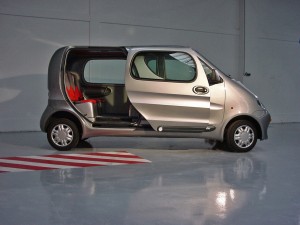
Take it away Will….
Compressed Air Car by Tata: Fiberglass Construction in India
By Will Silk
In today’s world of ever increasing fuel prices, just about everyone across the globe is tired of the oil companies playing with their pricing.
This has left many car constructors to look to alternative methods for vehicle power trains. While in America, hybrid technology is currently the en vogue way to save fuel, a vehicle that has come to light in India may soon change all that, it’s called the Tata/MDI OneCAT.
To us here at Forgotten Fiberglass, we know Tata Motors as the Indian car company now with ownership of Britain’s iconic Jaguar and Land Rover brands. However, in 2009, Tata Motors began work with MDI (Motor Development International) on a compressed air powered vehicle, and get this; its body is made of fiberglass!
While some may be thinking that the concept is far fetched, a lot of scientific thought has gone into the engineering of this new vehicle allegedly set to debut in India in 2012 with a price equal to that of around $9000 USD. While many companies have recently begun to shift more interest to hybrid technology, several independent companies across the globe have been researching the use of compressed air for a source of alternative power. MDI is one such company that, along with partner Tata Motors, appears to be quite close to marketing a real car for the general public.
The biggest benefit to such a power train is zero emissions and a reduction of harmful corrosive acids from batteries. Production costs of such a power train are deeply cut, as a compressed air engine doesn’t require a cooling system, spark plugs, mufflers and so forth; all added expenses in the parts area that tally up in the cost of production.
Compressed air power trains are also capable of working with regenerative braking systems. This has been implemented in Sweden in the bus industry and has proven that compressed air hybrid buses have captured a 60 percent increase in efficiency.
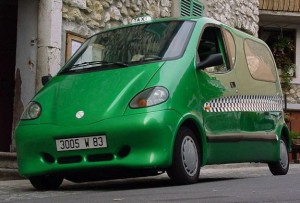 It’s not all roses with compressed air power trains though. When air expands in the engine it cools at a high rate and will require heating via some sort of heat exchanger in order to maintain proper engine performance.
It’s not all roses with compressed air power trains though. When air expands in the engine it cools at a high rate and will require heating via some sort of heat exchanger in order to maintain proper engine performance.
Likewise, a heat exchange may be needed to maintain proper temperature of the compressed air stored in the vehicle’s onboard storage tank.
The other problem, and one that faces many alternative power train vehicles, is a proper refueling infrastructure. This is not a huge problem with compressed air, as there are devices that can refuel the vehicle in as little as 3-4 minutes, versus using your old school air compressor in the garage for 3-4 hours, and can be installed at most modern fuel stations.
One of the biggest questions is crash worthiness with the Tata/MDI OneCAT. While many nations have little or no crash testing in place,America has perhaps one of the strictest and most comprehensive testing regiments. While some manufacturers play with hydrogen fuel cells, this form of alternative fuel can be somewhat volatile in a crash. One benefit to compressed air is that it offers little to no flammable behavior in the event of a crash.
Tata chose to construct the OneCAT out of fiberglass, probably to save as much weight as possible, as the current technology of compressed air engines offers a much lower power output than that of current gasoline and gas/hybrid set ups. There is some concern that in order to save more weight the manufacturer will use carbon fiber tanks to store the air onboard the vehicle.
Although very strong, carbon fiber has a tendency to become brittle and when under extreme loads and pressures, produces a shrapnel effect upon breaking up. There is also concern that the use of low resistance tires and the deletion of onboard safety items like air bags in order to cut weight and gain performance will have some sort of impact on the OneCAT getting access to the North American market anytime soon.
One thing is for sure; fiberglass is still alive and well and is being viewed as a viable construction material by mass production car manufacturers today.
Glass On!
Will Silk
Automotive Consultant
Motorsport Journalist
Professional Race Mechanic
http://ezinearticles.com/?expert=Will_Silk
For those of you interested, here’s some additional information from Will concerning the Tata car and its compressed air engine:
Click here to learn more information about this car and it’s “compressed air engine”
Click here to learn more about Tata Motors
In addition, I found an interesting 7 minute video from CNN about this car and its engine. Click on the screen below to review this video and learn a bit more about the design and engineering of this car.
Summary:
Thanks very much to Will Silk for taking the time to review this “future is now” vehicle and bring in the latest news on how fiberglass is being used in yet another innovative project within the automobile industry. Great job Will! And for those of you wishing to learn a bit more about Will Silk and his background as a writer, click here.
Hope you enjoyed the story, and until next time…
Glass on gang…
Geoff
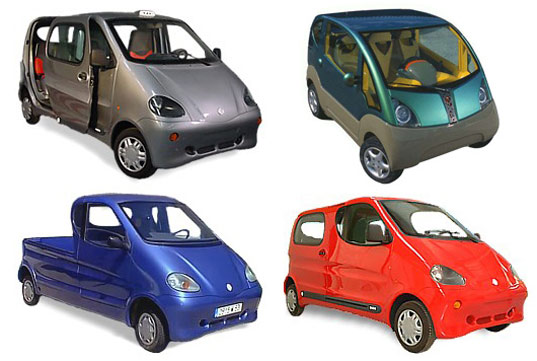
——————————————————————-
Click on the Images Below to View Larger Pictures
——————————————————————-
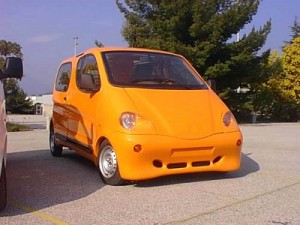
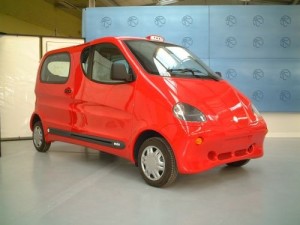

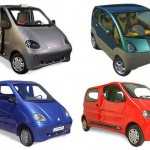
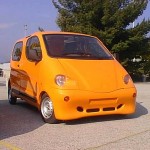
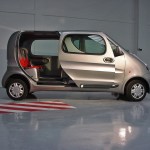
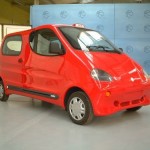
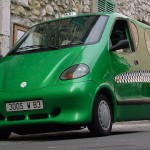

Wow, Tony AtoZ is here ! Met you once in the Trans-Am days. You’ve driven the wheels off of everything under the Sun.
(For kicks, click on his name above. You’re in for a surprise.)
Regards,
Tom in Detroit
“The really sad part is that we (the engineers / inventors in the United States of America) didn’t come up with this compressed air engine.” Actually, we did. I came across it a couple of years ago while looking for something else. Modern Mechanix ran a blurb about it in 1932! You can see it at ModernMechanix.com . Like many better mousetraps, the world did not beat a path to the inventor’s door. The article does not mention what the generator (required to power the heater needed in the process) runs on. The actual patent can be found at COMPRESSOR
ROY J. METERS, et al
The size of tanks and danger of explosion in an accident probably doomed it.
Very interesting and innovative technology. Great job Will writing and shining a light on such alternative propolsion technology.
Reading the article & encountering term ‘compressed air power trains’ i kept wondering why it all seemed so familiar. scratching my head to activate my non-engineering savvy brain wrinkles, i remembered an application of the expansion of air to accomplish work. simply add flammable fuel and a source of ignition and you have the internal combustion air pump. ….. bt perhaps i over simplify…..
– Tata certainly has the deep pockets & in-house resources to develop any technology seen as viable.
-on the related topic intelligently discussed in comments & article please read these words from – an energy fundamentals page:
the blatant opportunist
‘There seems to be an amazing amount of appallingly bad
misinformation on both traditional and alternate energy
out there. Driven by everything from wishful thinking to
hidden agendas to hero worship to big business hatred to
government stupidity to subsidy ripoffs to bad labwork to
utter cluelessness to R&D funding grabs to outright scams.
On the other hand, there are genuine new energy and
alternate energy opportunities emerging…….’
advocate or skeptic it is an interesting future for personal and mass transportation.
just not as interesting as ‘glass. ; ] scot-
Thank you all for the comments on this article. It was a real pleasure putting this together and is truly an honor to be published amongst the pages of Forgotten Fiberglass.
Glenn Brummer mentioned about it being too bad we didn’t come up with this technology here in the USA, and although I agree with that statement to an extent, the MDI concept doesn’t mean that all the money is over seas. As the CNN brief relates, MDI is currently licensing the technology, so there’s no reason why one here in the States couldn’t obtain a license for the powerplant and place it in a vehicle of American design.
We have many great minds here in the USA, unfortunately we don’t have the proper government support like that in some European nations to allow these minds to expand and bring new products to the American marketplace. Britain continues to have an excellent “cottage” industry for sports and racing cars, something our draconian EPA would never allow to occur here in America.
I think there’s still hope though, still time to change for the better. It begins with everyday people becoming politically active and letting the powers that be know what’s right for us in the USA. We have a great system in America, it’s time we make it work for us.
Great article by my good friend Will Silk, his expression and writing talent describes the future with automotive fiberglass. Certainly not a forgotten art, neither this industry or Will’s writing talent will be forgotten. There is an exciting future ahead for all of us ! Cheers ! Tony a2z racer
I’ve been following these cars for several years and am excitied to see if they take off.
With more and more solar energy and wind farms that produce polution free electricity, this is a viable new technology. The really sad part is that we (the engineers / inventors in the United States of America) didn’t come up with this compressed air engine. We don’t need any more imports. I had an email on this Tata car about a year ago and didn’t think we’d ever see it go into production – I applaud their efforts – too bad we didn’t come up with this concept in the good ole USA.
Here’s the unfortunate truth. Many so called “zero emissions vehicles” are in fact merely “elsewhere polluting vehicles”. Battery powered electric vehicles and compressed air vehicles require electricity to perform the work of recharging the energy storage units for the vehicles. Most electricity in America is generated in coal burning power plants, or even worse, nuclear power plants. The pollution and waste from these sources is worse than from super efficient “PZEV” small cars with a conventional gasoline engines. Sadly, since the fifties, we’ve known how to make ultra-light, ultra-efficient small cars that yield as much as 300+ mpg. It’s just that people aren’t is willing to give up their 5,000 pound barges for streamlined single seat formula car like commuters weighing 500 pounds or less.